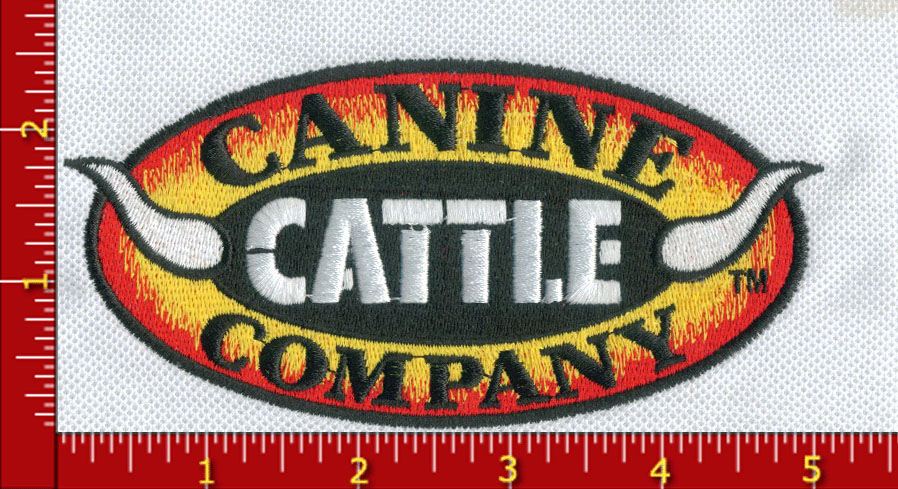Mastering the Art: Digitizing for Small Hoops to Maximize Design Impact
Embroidery, with its intricate designs and textured artistry, has the power to transform fabrics into visually stunning creations. However, when working with small hoops, the challenge becomes how to maximize design impact in tight spaces. In this blog, we delve into the art of digitizing for small hoops—a skill that allows embroiderers to unleash their creativity on smaller canvases while maintaining the precision and detail that make embroidery truly remarkable.
The Challenge of Small Hoops
Small embroidery hoops offer unique opportunities and challenges. While they are perfect for embellishing smaller items like cuffs, pockets, and hats, the limited space requires a strategic approach to design. Digitizing for small hoops involves adapting designs to fit within these constraints while ensuring that the final result is visually appealing and retains the essence of the original artwork.
Limited
Space:
Small hoops provide a confined space for embroidery,
limiting the size and complexity of the designs that can be accommodated. This
constraint requires careful consideration of design elements to ensure they fit
cohesively within the available area.
Fine Detailing:
Achieving fine detailing in small spaces poses
a challenge. Intricate lines and small text can become difficult to reproduce
clearly, making it essential to adapt the design without sacrificing its visual
impact.
Balancing Complexity:
While the desire is to create visually appealing and intricate designs, the challenge lies in striking a balance between complexity and legibility. Overly complex designs may lose their impact when scaled down for small hoops.
Strategies for Digitizing for Small Hoops
1.
Simplify Complex Designs:
Start by simplifying complex designs.
Streamline intricate details, reduce the number of elements, and focus on the
key features that define the design. This ensures that the essence of the
artwork is preserved even in a smaller format.
2. Adjust Stitch Density:
Pay attention to stitch density when digitizing for small hoops. Too many stitches in a
confined space can result in a crowded and messy appearance. Adjust the stitch
count to maintain clarity and prevent the design from becoming overly dense.
3.
Choose Appropriate Fabrics:
The choice of fabric plays a crucial role in
small hoop embroidery. Select fabrics that complement the design and allow for
clean stitch definition. Avoid fabrics that are too delicate or prone to
puckering, as these can affect the overall quality of the embroidery.
4. Use
Bold Colors and Contrasts:
Opt for bold colors and high contrasts to
enhance visibility in smaller designs. Vibrant colors and distinct contrasts
make the embroidery stand out, ensuring that even smaller details are
noticeable.
5. Focus on Outlines:
Emphasize outlines to define the shapes and
features of the design. Strong outlines help maintain clarity and prevent
elements from blending together. Consider using thicker outlines for added
impact.
6. Test on Similar Fabrics:
Before finalizing a design, test it on a
similar fabric with a small hoop to assess how it translates in practice. This
allows you to make any necessary adjustments and ensures that the digitized
design aligns with your vision.
7. Optimize Lettering and Fonts:
If your design includes text, choose fonts
that are legible in small sizes. Avoid overly intricate or thin fonts that may
become challenging to reproduce clearly. Optimize lettering for readability and
visual impact.
8. Incorporate Negative Space:
Negative space can be a powerful design element, especially in small hoop embroidery. Allow for sufficient negative space to prevent the design from feeling cluttered. This enhances visibility and contributes to a balanced composition.
Benefits of Digitizing for Small Hoops
1.
Versatility:
Small hoop embroidery opens doors to a world
of versatility. It allows you to embellish a wide range of items, from
accessories like caps and patches to smaller sections of apparel. This
versatility makes small hoop embroidery suitable for various applications.
2. Cost-Effectiveness:
Digitizing for small hoops can be more
cost-effective, especially for businesses that offer embroidery services. Smaller designs require fewer stitches and less time to
complete, contributing to overall cost savings.
3. Personalization:
Small hoop embroidery is ideal for adding
personalized touches to items. Whether it's monogramming initials, adding a
small logo, or incorporating a unique design element, small hoops enable a high
level of personalization.
4. Attention to Detail:
While small hoops pose challenges, they also
encourage meticulous attention to detail. Digitizing for small hoops requires
precision and careful consideration of each design element, resulting in a
final product that reflects craftsmanship and attention to detail.
5. Unique Design Opportunities:
The constraints of small hoops create unique design opportunities. Artists can experiment with innovative layouts, play with negative space, and use the limited canvas to their advantage, resulting in designs that stand out for their creativity and ingenuity.
Tips for Successful Small Hoop Embroidery
1.
Understand Hoop Limitations:
Familiarize yourself with the limitations of
the specific small hoop you are working with. Different machines and hoops may
have varying size constraints, and understanding these limitations is crucial
for effective digitization.
2. Choose the Right Design Elements:
Select design elements that are well-suited
for small embroidery. Bold shapes, clear outlines, and distinct features
contribute to successful small hoop designs.
3. Prioritize Clarity:
Clarity is paramount in small hoop embroidery.
Prioritize elements that contribute to clarity, such as clean lines, bold
colors, and well-defined shapes.
4. Test and Adjust:
Regularly test your digitized designs on similar fabrics with small hoops. This allows you to identify
any issues and make necessary adjustments before proceeding with the final embroidery.
5. Collaborate with Clients:
If you're creating small hoop embroidery for
clients, collaborate with them closely. Understand their vision, preferences,
and any specific elements they want to include in the design. Communication is
key to delivering a product that exceeds expectations.
6. Experiment with Techniques:
Small hoop embroidery offers an opportunity to experiment with various techniques. Try different stitching styles, incorporate textures, and explore creative approaches that enhance the visual impact of the design.
Conclusion
Embarking on the
journey of digitizing for small hoops is an exciting endeavor that requires a
blend of creativity, precision, and adaptability. While the challenges of
limited space may seem daunting, they also serve as a canvas for unique and
impactful designs. By simplifying, adjusting, and focusing on key design
elements, embroidery enthusiasts can unlock the full potential of small hoop
embroidery. Whether you're adding a personal touch to accessories or creating
cost-effective, personalized merchandise, mastering the art of digitizing for
small hoops allows you to make a big impact in the world of embroidery.


